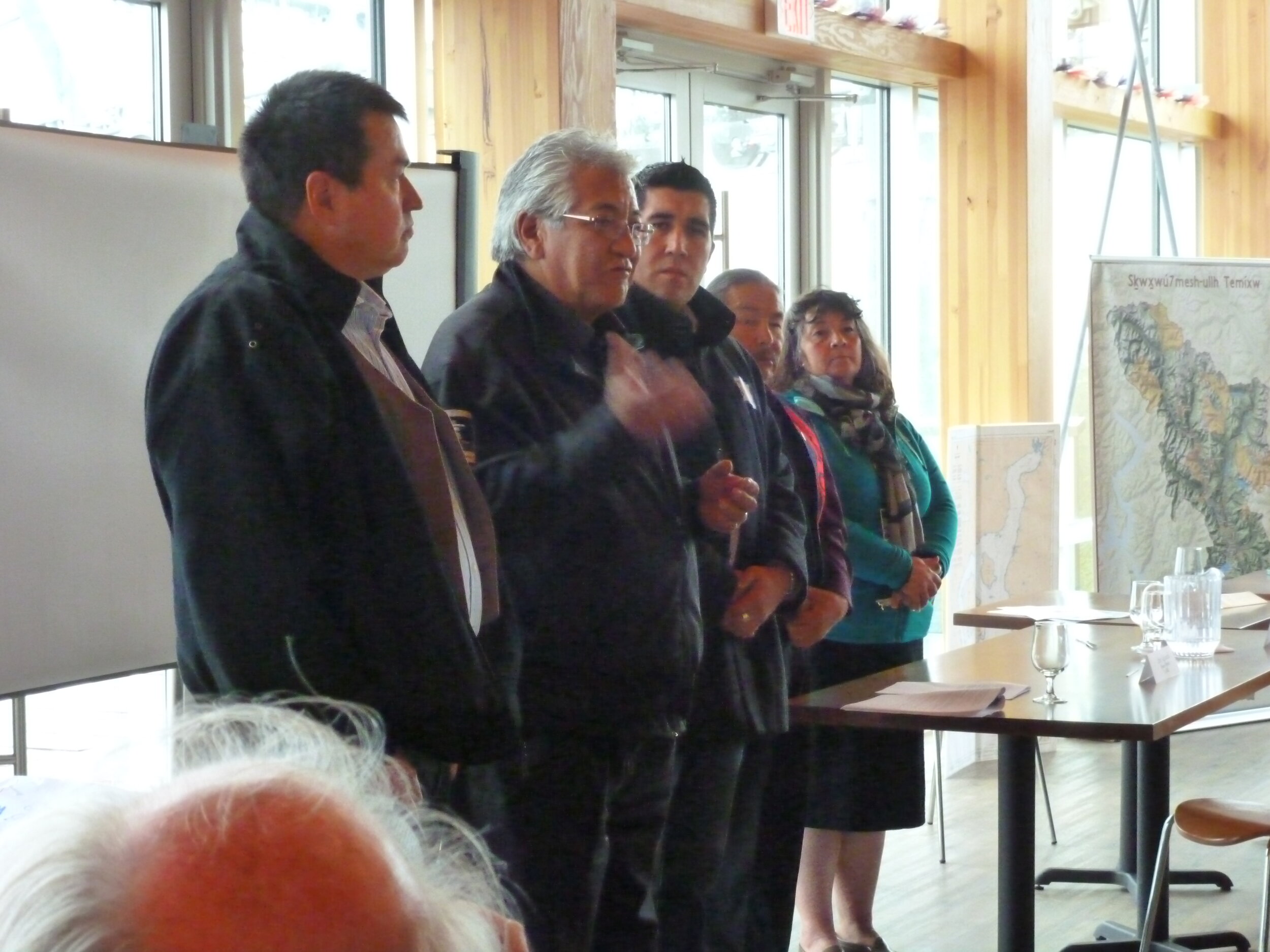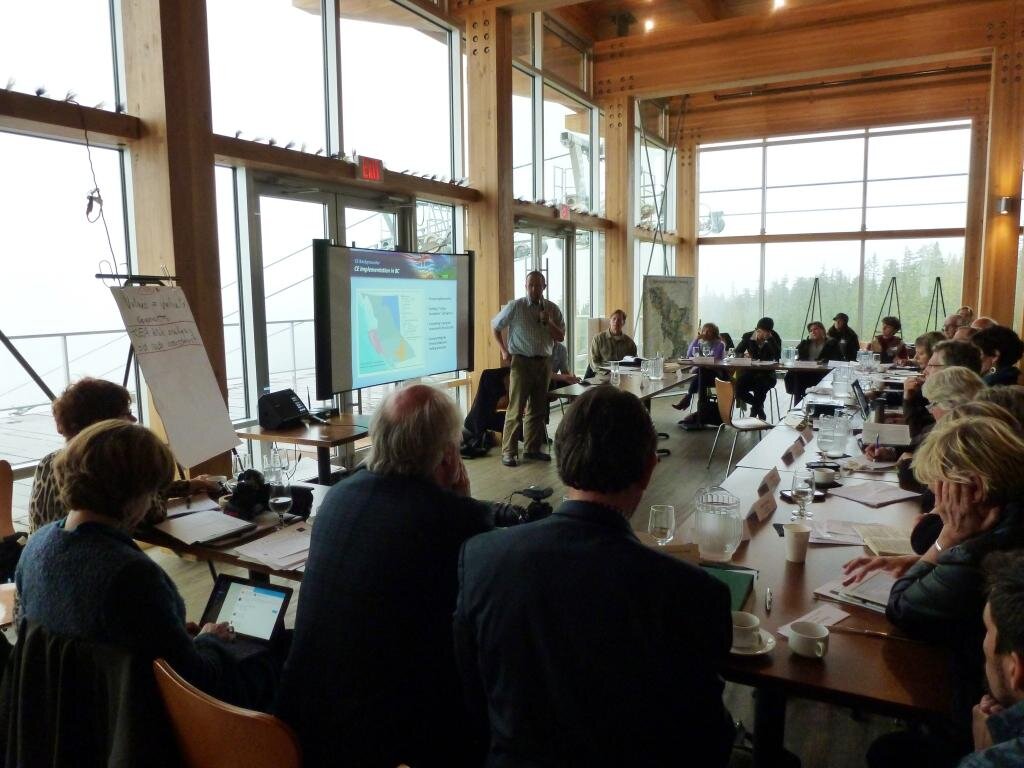Fall 2014 Forum Review
On Friday, October 17th, elected officials, government staff, and NGO observers made the journey to the top of the Sea to Sky Gondola near Squamish to join hosts Squamish Nation for the third 2014 Howe Sound Community Forum. In total, 63 people came together for a packed schedule continuing on the theme of a comprehensive land and marine planning for Howe Sound.
Chiefs Gibby Jacob and Bill Williams, Council members Chris Lewis, Josh Joseph, and Richard Baker were warm hosts during an otherwise damp day in Howe Sound. The morning’s traditional welcome was followed by a well-received announcement from Squamish Nation stating they have decided to start the process of a Marine Use Plan, intending to identify areas in the marine environment they want to protect. The Squamish Nation’s intention through the Howe Sound Community Forum is to forge a partnership, appeal to agencies and local governments for help.
Squamish Nation has in place the Xay Temixw – Sacred Land, Land Use Plan, which describes the community’s vision for the future of the forests and wilderness of the traditional territory. A Marine Use Plan for Howe Sound is the next phase of planning that seeks to find ways to sustain their livelihoods and the livelihoods of neighbouring communities while still protecting the ecosystem.
Charlie Short, Manager of Marine Initiatives with the Ministry of Forests, Lands and Natural Resource Operations (FLNRO) presented on Marine Planning in British Columbia.
Following up from May 2nd Forum at which time communities had expressed their support to further explore the Cumulative Effects Assessment tool, staff from the Province’s Ministry of Forests Lands and Natural Resource Operations (FLNRO) staff were prepared to present next steps.
In the presentation Howe Sound CEA Proposal Presentation the offer to proceed with a Cumulative Effects Assessment to be undertaken within the Provincial CEA Framework, but tailored to local governments’ request for an area-wide approach was made. To focus on the Howe Sound area, the CEA will generally be based upon the Landscape Units around Howe Sound, with assessment work commencing in early 2015.
The assessment would begin with environmental values that would likely take two years to complete. More values would be added as time, resources, and data become available. This Cumulative Effects Assessment is a decision tool that would assist all levels of government in planning for Howe Sound.
The Forum members were supportive of the offer and are returning to their communities with a CEA for Howe Sound Resolution and a resolution expressing support for Squamish Nation Marine planning. It is also recommended that Councils continue its commitment to the Howe Sound Community Forum and its ongoing contributions towards achieving comprehensive land and marine planning for Howe Sound over 2014-2018. The next steps will be to finalize the Howe Sound boundary study area, funding, and partnerships. This CEA assessment will complement and contribute to the Squamish Nation’s marine use planning.
Michelle Molnar Ecosystems analyst for the David Suzuki Foundation presented the near-final Natural Capital report for Howe Sound with a final report by the end of the year. Adam Taylor Director with Marine Life Sanctuaries Society, presented a film of the underwater Glass Sponge Reefs of Howe Sound, which opened many people’s eyes to these unique forms worth protecting.
With the municipal elections taking place in November, the forum will comprise of new representatives that will continue the momentum with planning for Howe Sound. For those resigning from their municipal positions, we invite them to continue as advocates for Howe Sound.
Chief Gibby Jacob asked the people in the room why they were there; responses were compiled and reflect the motivations of those in the room. In closing the meeting at the Summit Lodge, Council member Chris Lewis aptly stated, “All good things start at the top of a mountain, and flow their way into the sea.”


